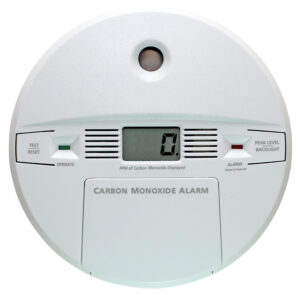[vc_row][vc_column][vc_column_text]
Preventing Carbon Monoxide Poisoning in the Home

Every year, thousands of people in the U.S. are sickened by carbon monoxide (CO) and over 1,500 people die. Because carbon monoxide is a colorless and odorless gas, it’s important to take steps to keep this silent killer out of the home, and have a plan when you suspect someone in the home has been sickened by CO gas.
Here are the steps to follow:
- Never use portable gas or charcoal grills indoors, including in open garages.
- Ensure that your furnace or heat pump is operating safely by scheduling an annual cleaning and safety inspection.
- Check appliances and vents for soot stains, blockage and corrosion. An improperly vented appliance such as a gas water heater, fireplace, oven, or dryer can prevent exhaust fumes to exiting the home.
- Never use a gas oven or stove to heat your home.
- When running a portable generator, ensure it is kept well away from the home.
 Carbon Monoxide Detectors
Carbon Monoxide Detectors
It’s legally required in many municipalities that every level of a home have a carbon monoxide detector installed. The detectors should be installed near bedrooms. When a the detector senses elevated levels of CO gas, an alarm will go off alerting you of potential danger. If the alarm goes off, everyone in the home, including pets, should go outside.
Hickey Plumbing, Air and Electrical can install carbon monoxide detectors as well as smoke detectors that are hard-wired with a battery backup.
If you suspect you or a family member has carbon monoxide poisoning
The symptoms of carbon monoxide poisoning include:
- Dull headache
- Weakness
- Dizziness
- Nausea
- Vomiting
- Shortness of breath
- Confusion
- Blurred vision
If someone is experiencing any of these symptoms do the following:
- Get out of the home.
- Call 911 and seek emergency medical treatment immediately
- Keep still to conserve oxygen in the blood
Do not return inside until the cause of the carbon monoxide has been located and fixed.[/vc_column_text][/vc_column][/vc_row]
